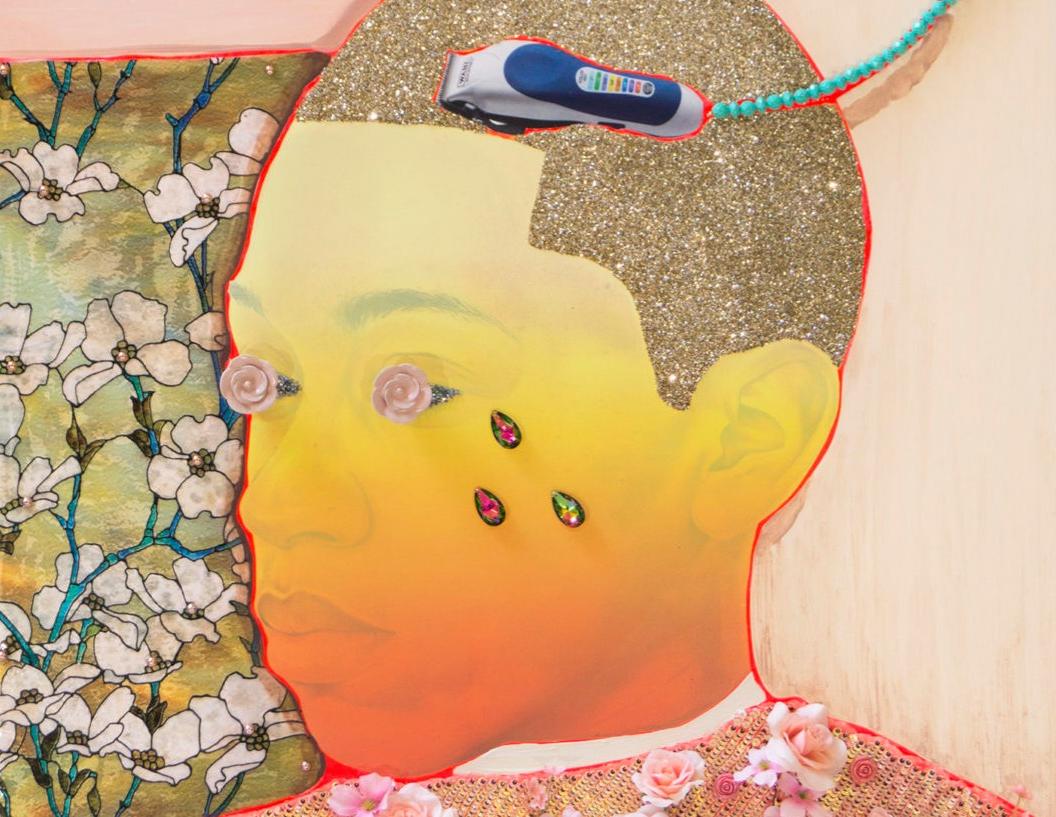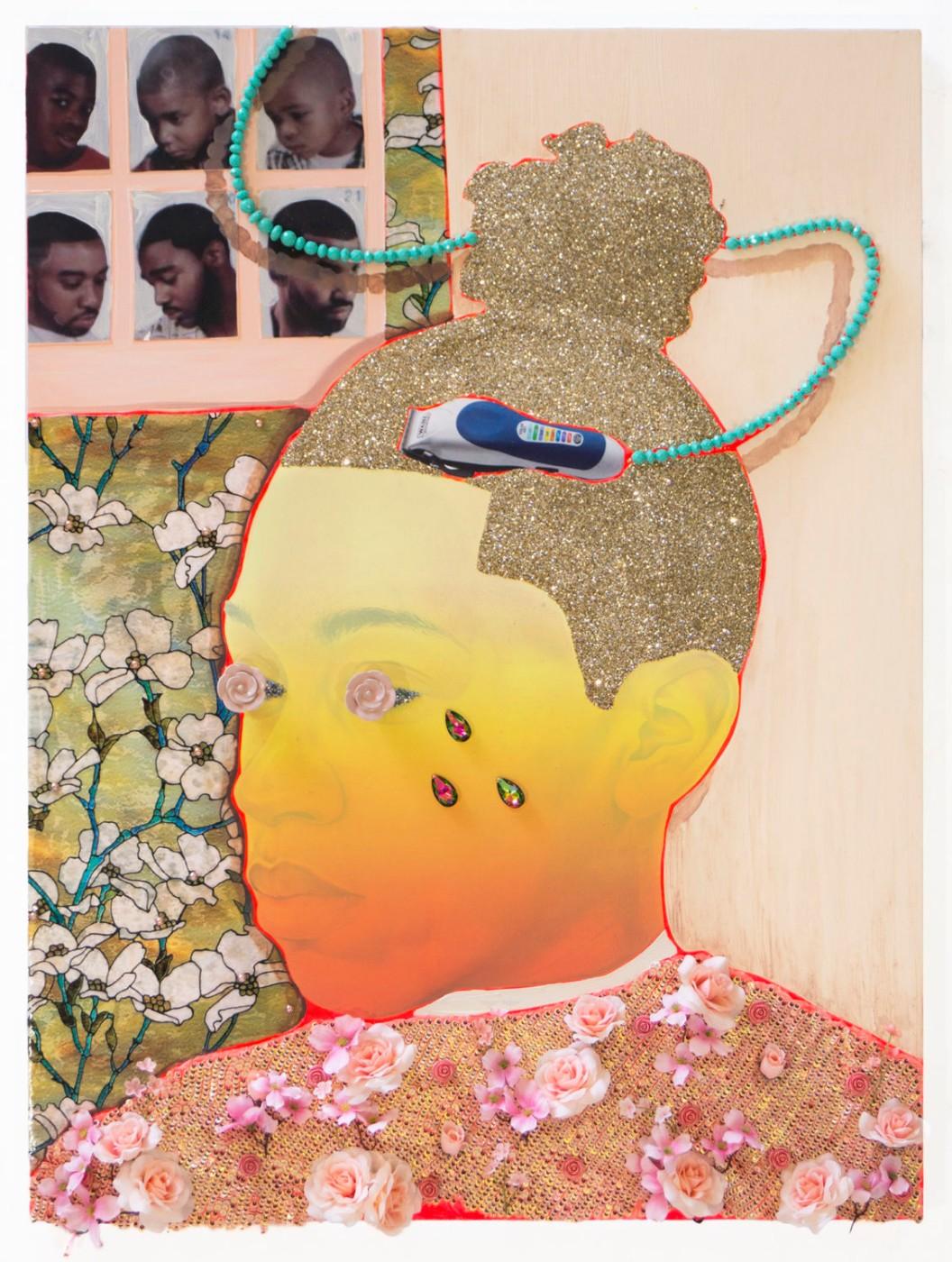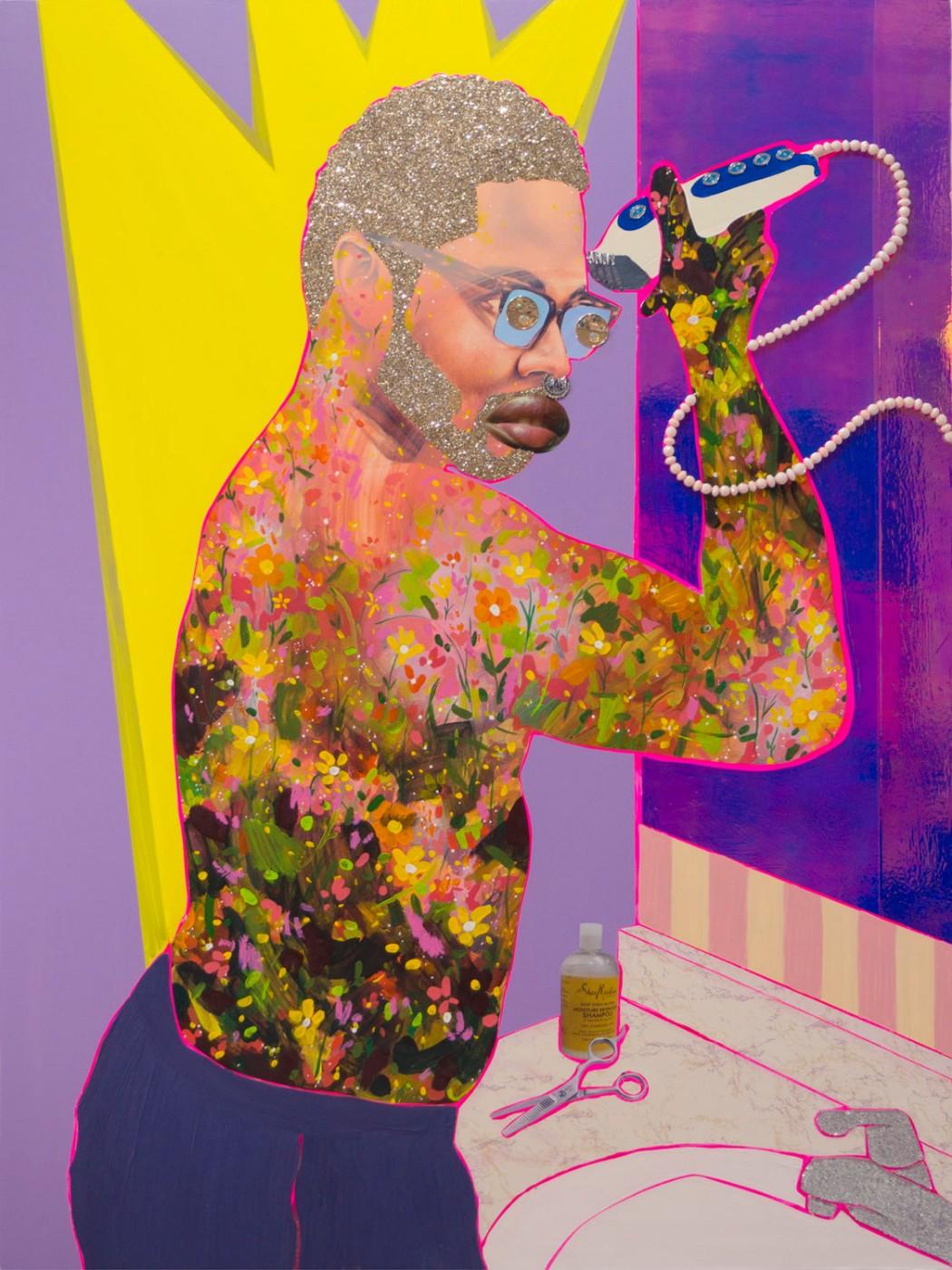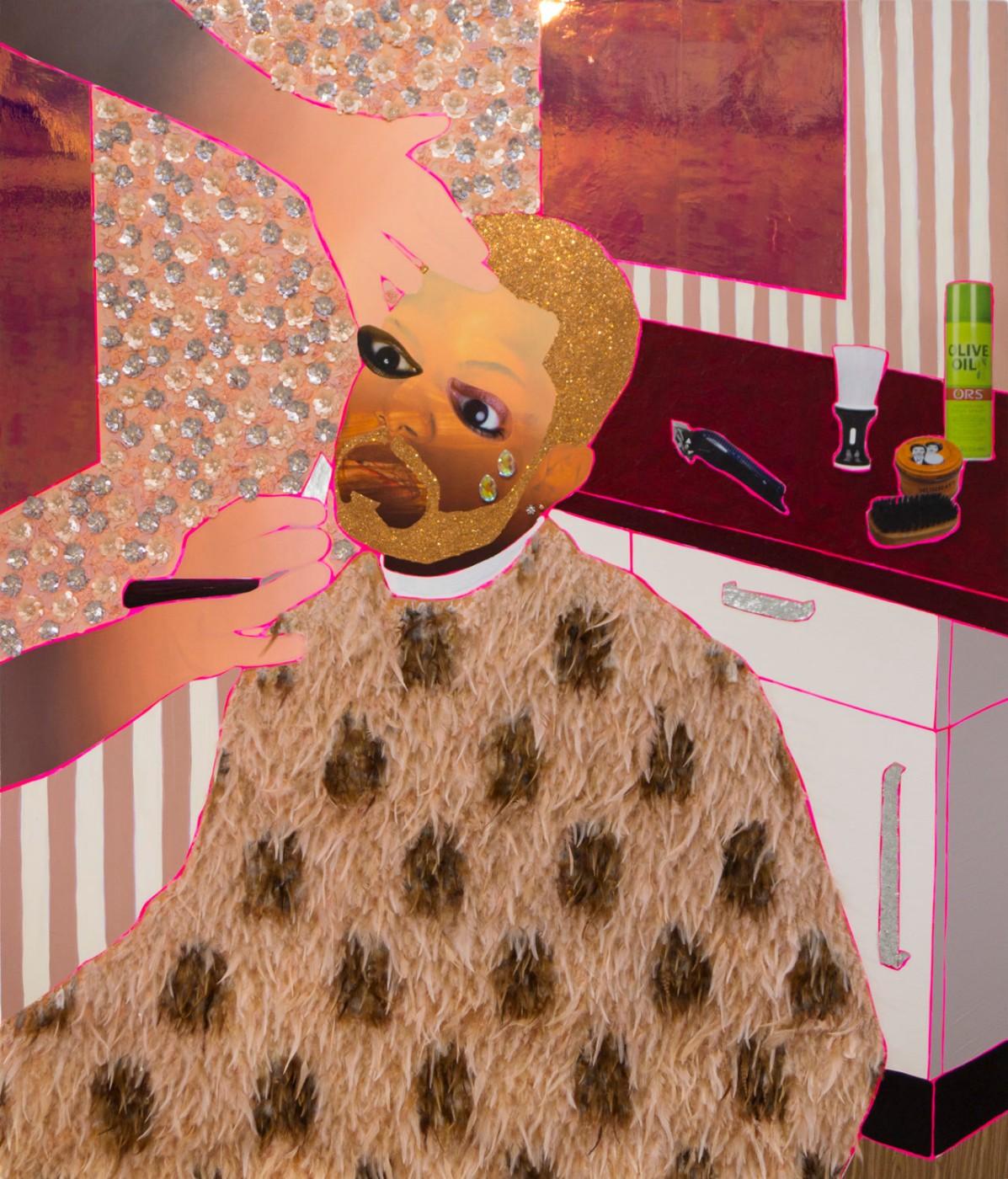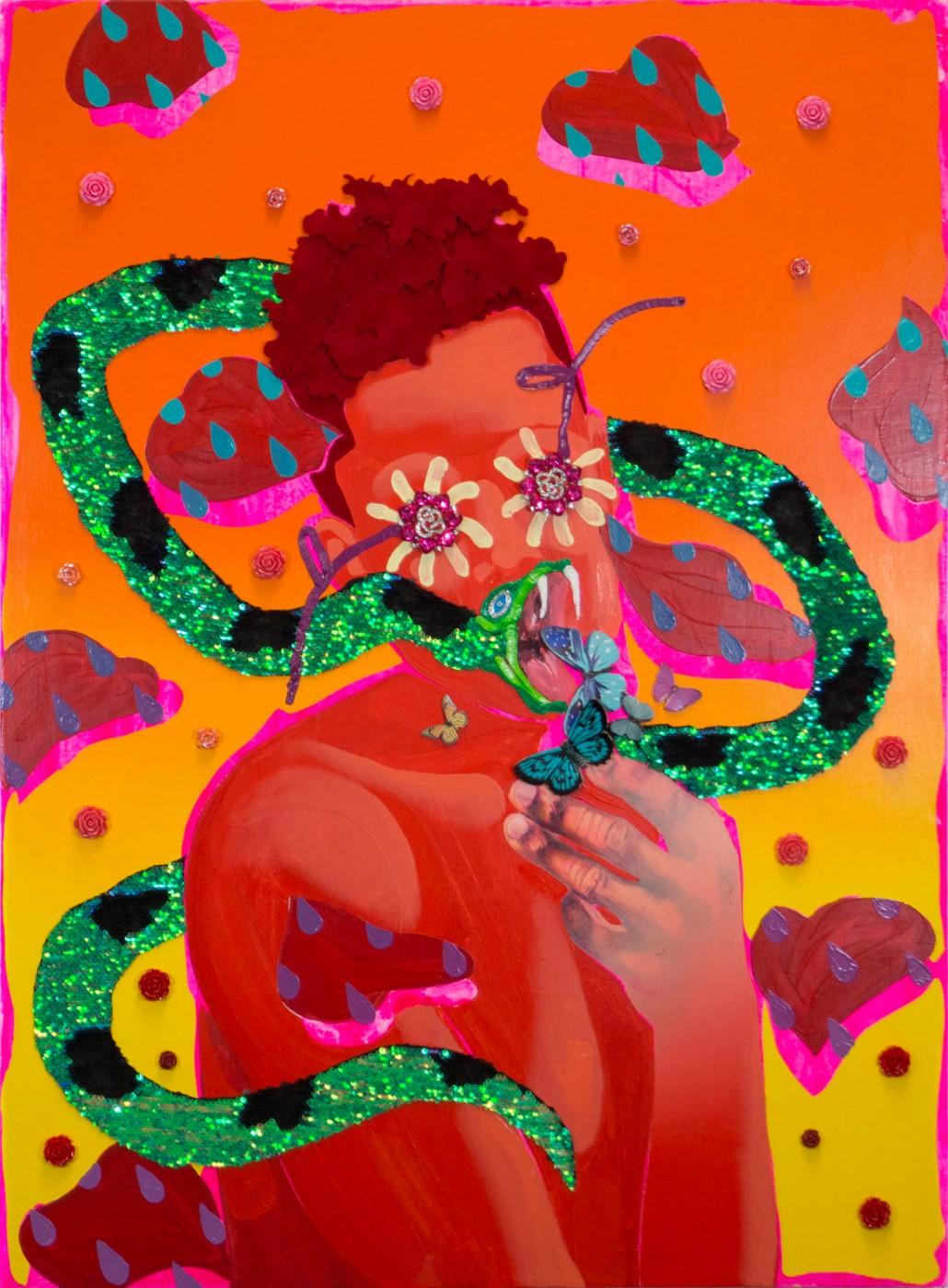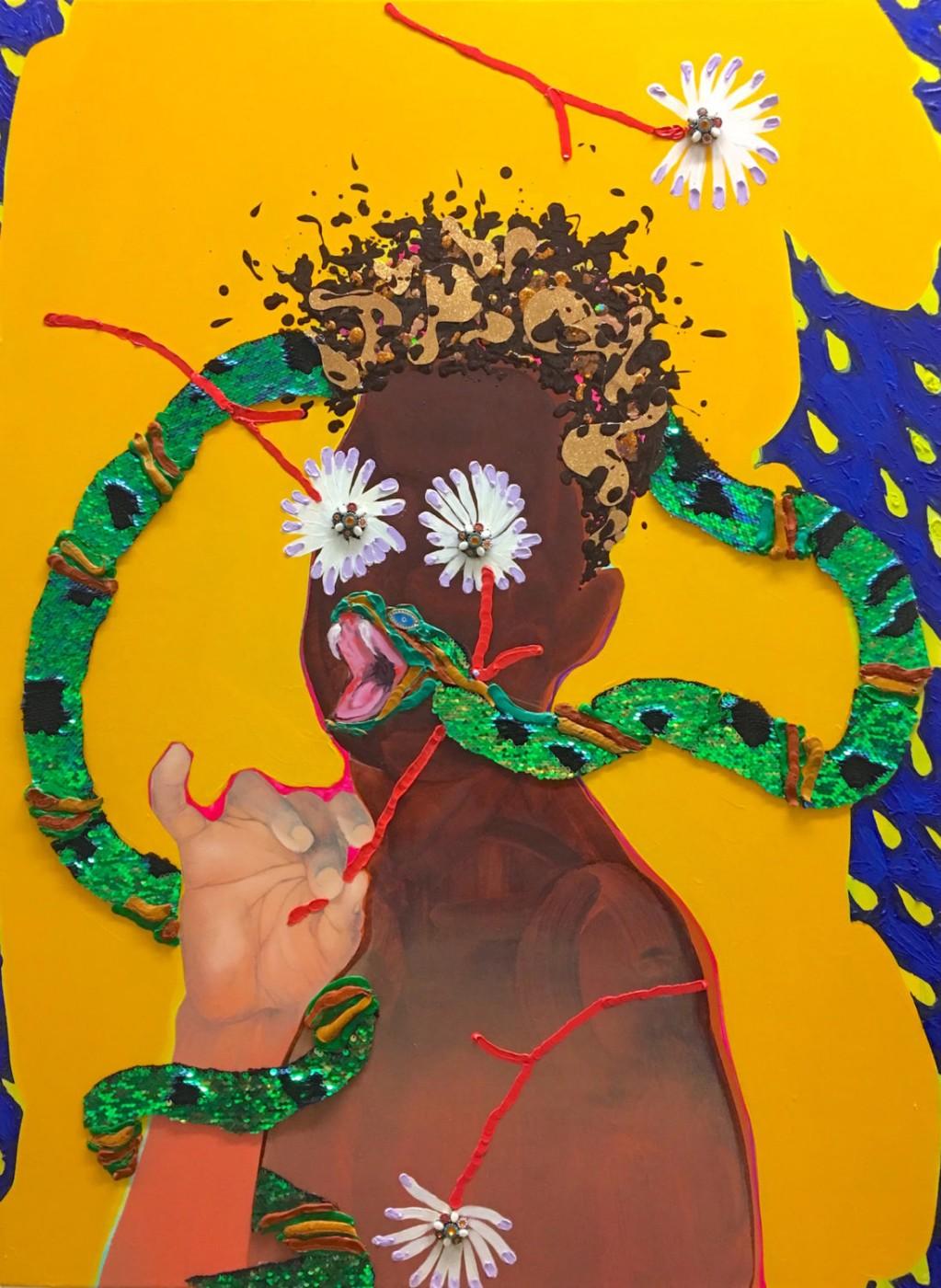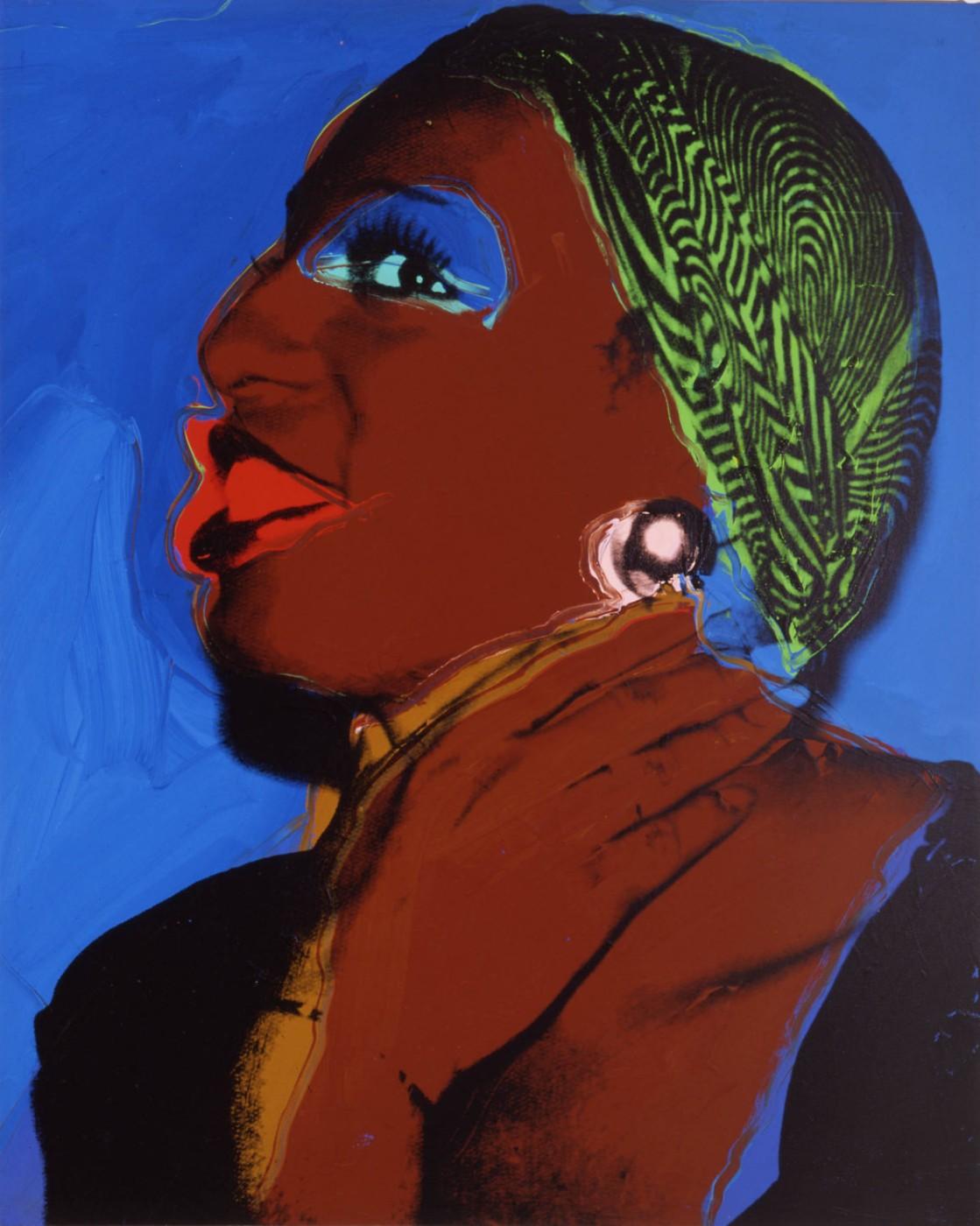An explosion of neon and glitter make Devan Shimoyama’s figurative paintings vibrate off the wall, now on view at the Andy Warhol Museum in the artist’s first solo museum show, Cry, Baby. While the colors and textures of Shimoyama’s works may not be subtle, their content is, showing black men, usually portrayed in the media as tough, even violent, in a vulnerable state, some with rhinestone tears streaming down their faces.
For Cry, Baby, Shimoyama debuts a new series of works at the Warhol Museum, showing men in the barbershop chair in multimedia portraits that combine paint, found object and photographic collage, glitter, fabric and more. A place of community for African-American men, these works question and push the bounds of the traditional masculinity found in barbershops. Shimoyama seeks to take down the harmful hyper-masculinity that can be found here, and make it a safe space for queerness and tenderness. The intimacy in these works allows space for his subjects to express the vulnerability that results from oppression due to their sexuality, race, or gender expression. Through this freedom of expression, Shimoyama offers visions of liberation. Depicted in bright, joyful colors and materials, the images celebrate the entirety of his subject, their vulnerability, difference, and all.




